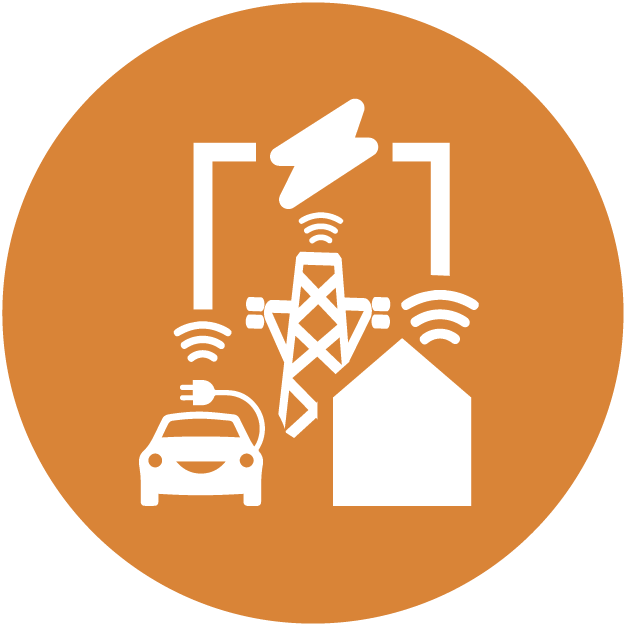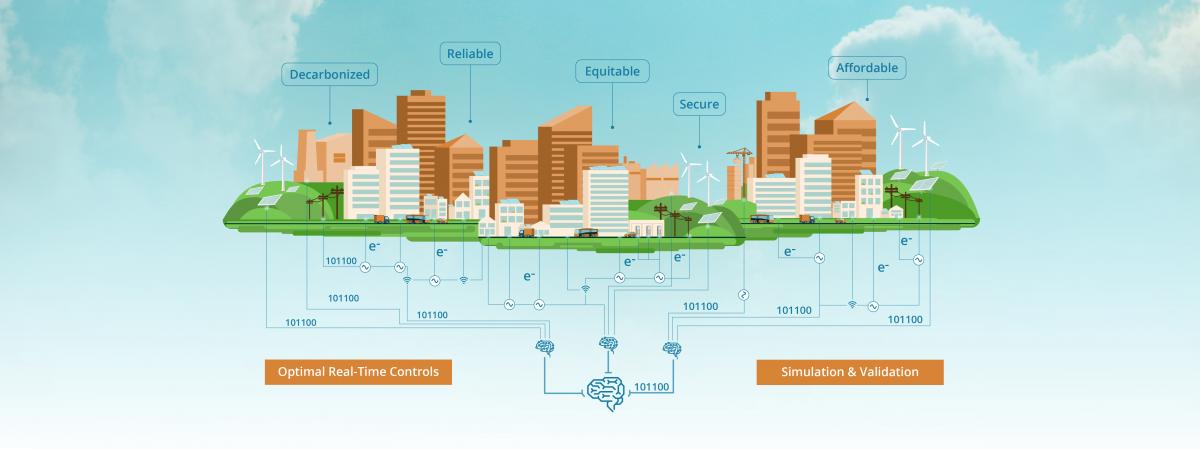Integrated Energy Systems
Ten-Year Goal
Enable an economically sustainable, equitable, zero-carbon energy economy and society by creating an integrated energy system simulation capability and a validation testbed.
The Challenge
 The term Integrated Energy Systems (IES) broadly describes a holistic approach to finding coordinated energy and economic solutions from across a wide range of energy options. These energy systems include production (solar, wind, hydro, biofuels), conveyance (electricity, thermal, hydrogen), storage (daily and seasonal), and customer-level use (buildings, transportation, industry). At present, these systems are linked, but they usually function separately or respond individually depending on a wide range of disparate system-operation goals . The inability to link these systems may limit our ability to find economically feasible zero-carbon energy solutions across sectors. We also may underappreciate the future opportunities available as vehicles, storage, and buildings become more connected to and interactive with the electricity grid.
The term Integrated Energy Systems (IES) broadly describes a holistic approach to finding coordinated energy and economic solutions from across a wide range of energy options. These energy systems include production (solar, wind, hydro, biofuels), conveyance (electricity, thermal, hydrogen), storage (daily and seasonal), and customer-level use (buildings, transportation, industry). At present, these systems are linked, but they usually function separately or respond individually depending on a wide range of disparate system-operation goals . The inability to link these systems may limit our ability to find economically feasible zero-carbon energy solutions across sectors. We also may underappreciate the future opportunities available as vehicles, storage, and buildings become more connected to and interactive with the electricity grid.

Research Summary
The IES domain is broad and rapidly expanding. A wide range of active research programs fall naturally under its umbrella, including many in the Energy Technologies Area (ETA). The following examples highlight some ongoing research efforts that are elements in now-formidable research programs in ETA. This work builds upon strong ties to the ETA’s previous initiatives in sustainable transportation, urban building energy infrastructure, and grid modernization.

